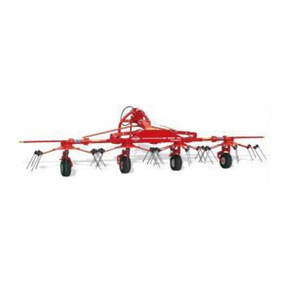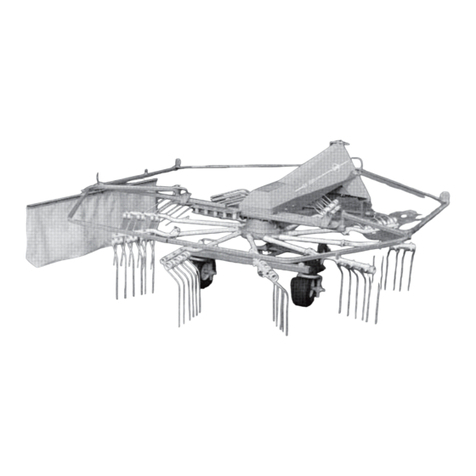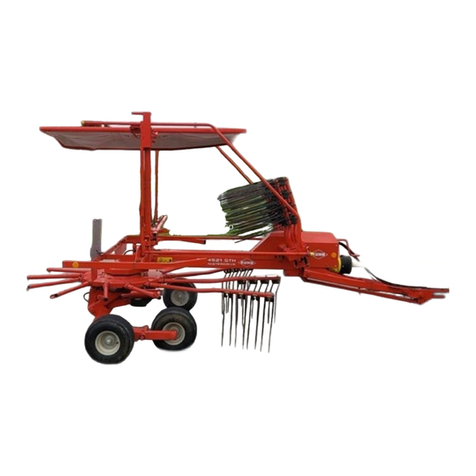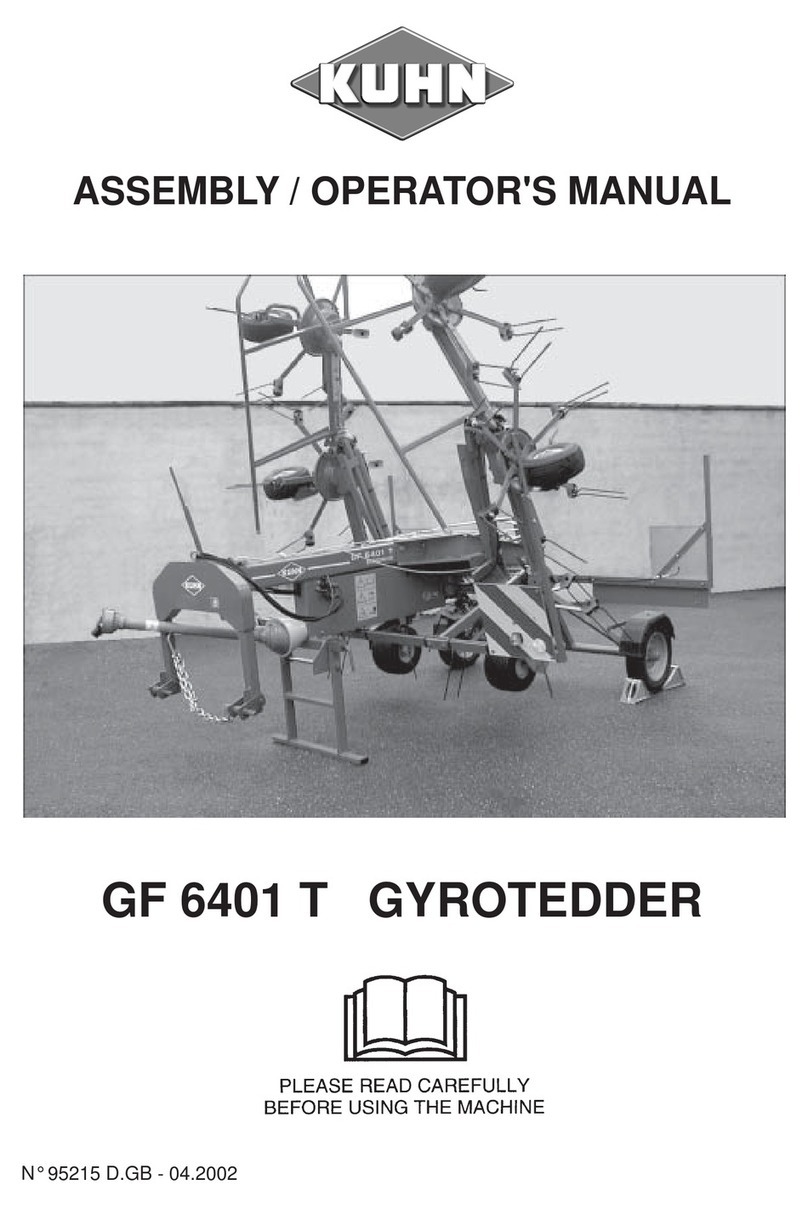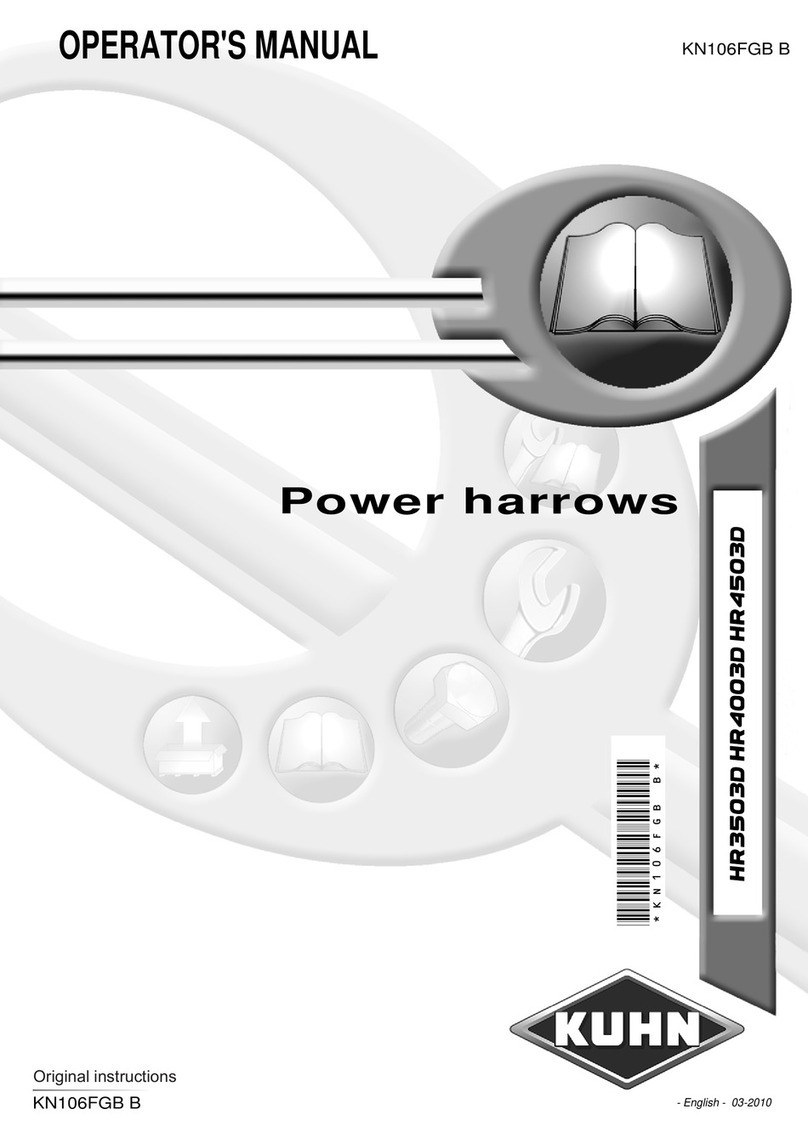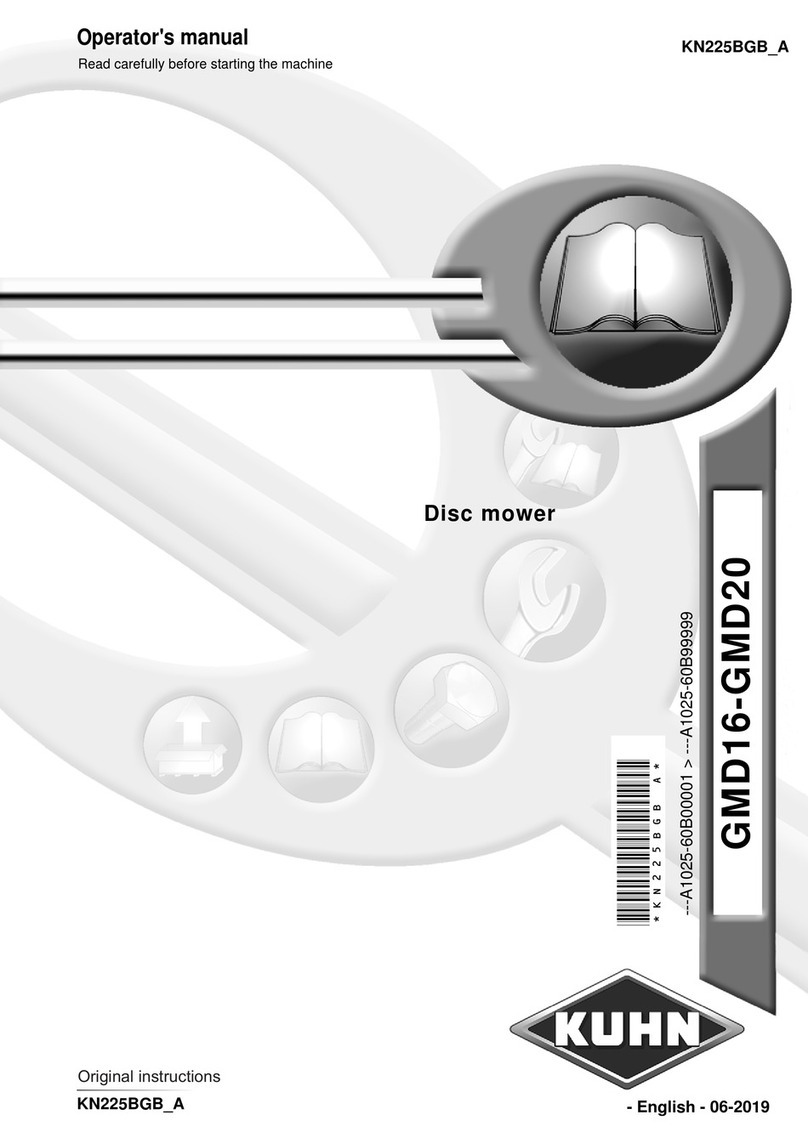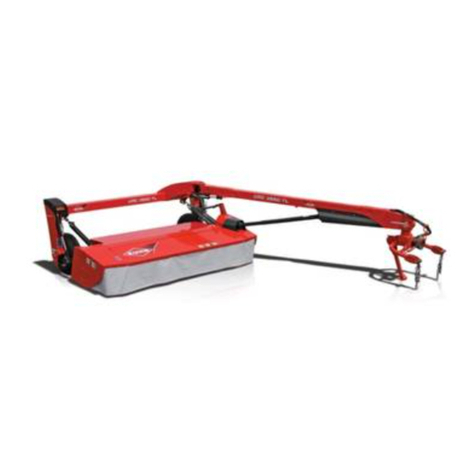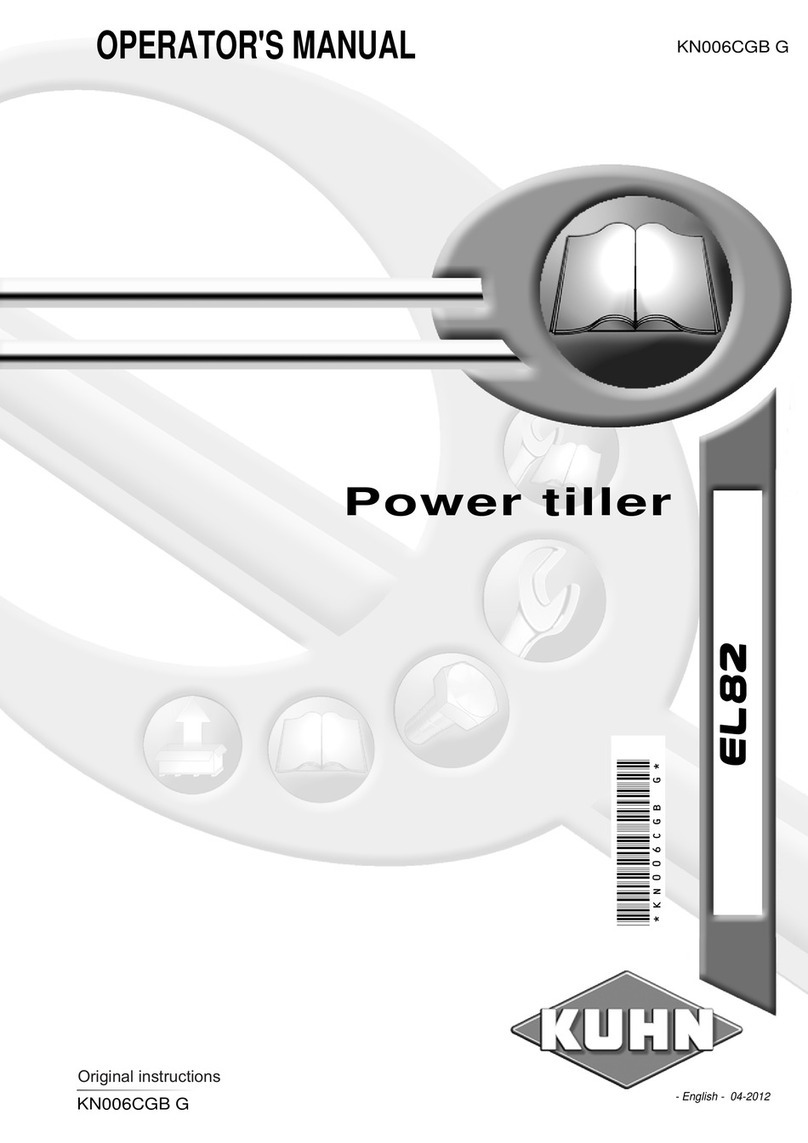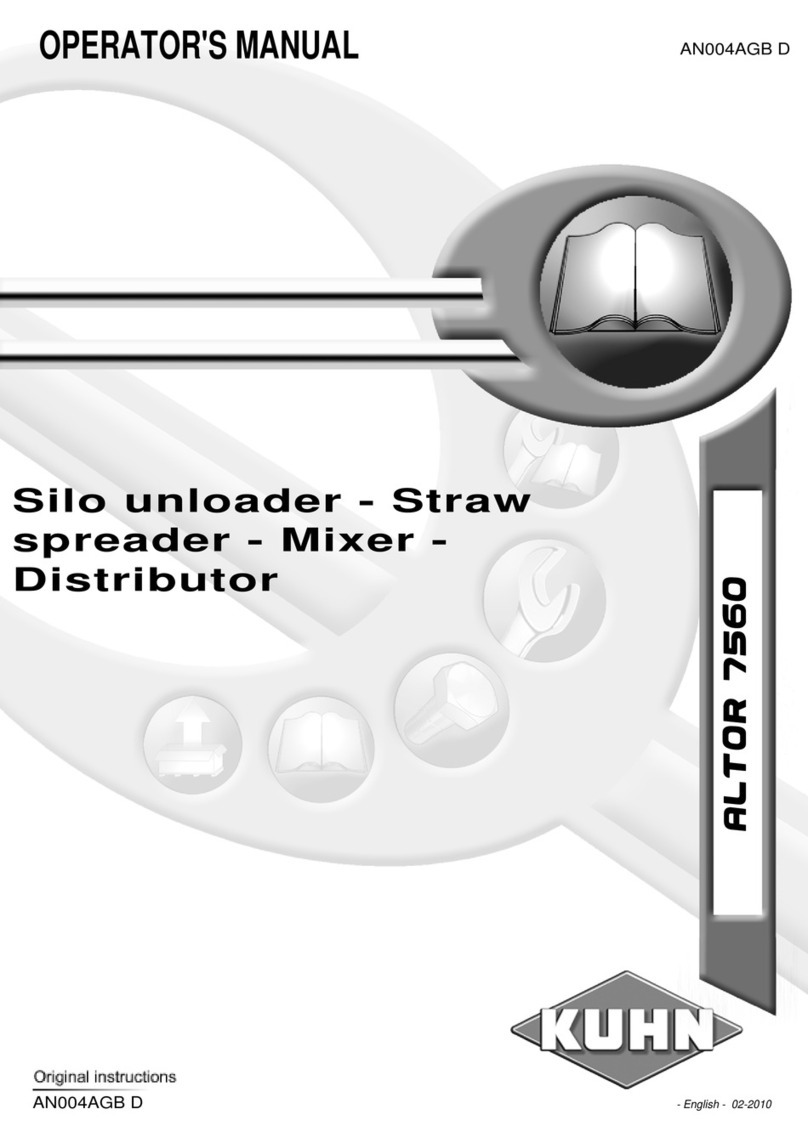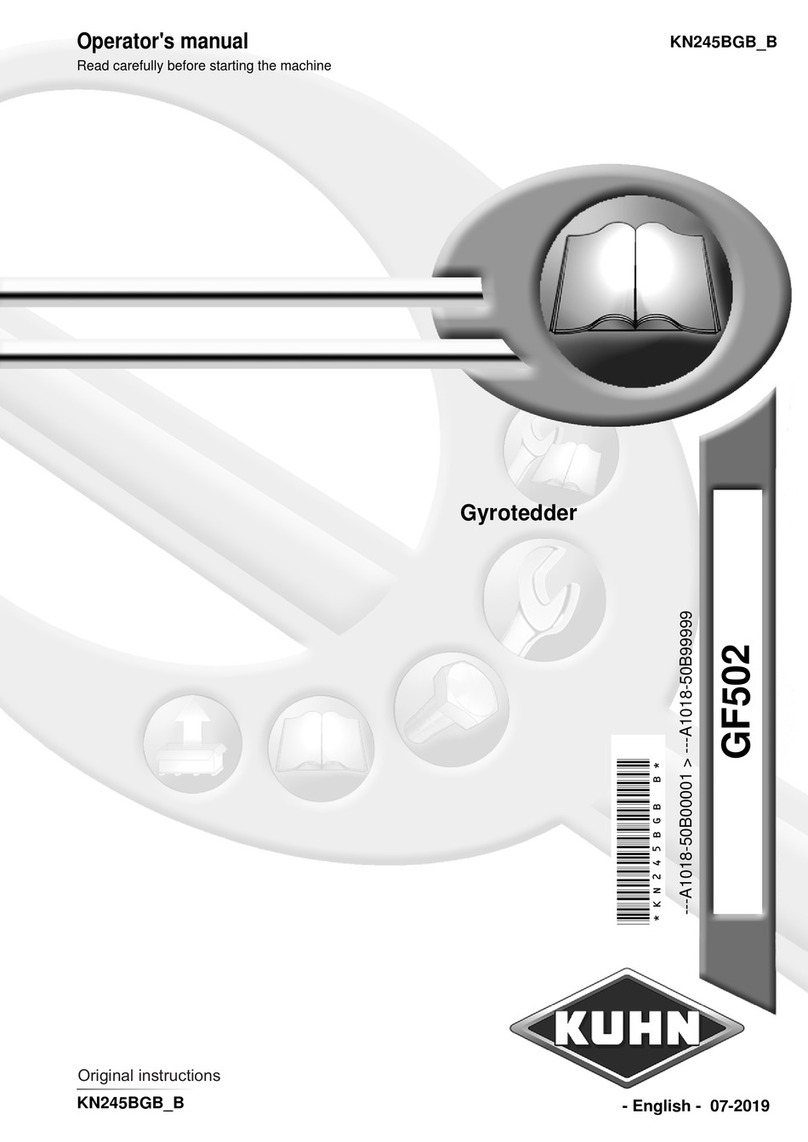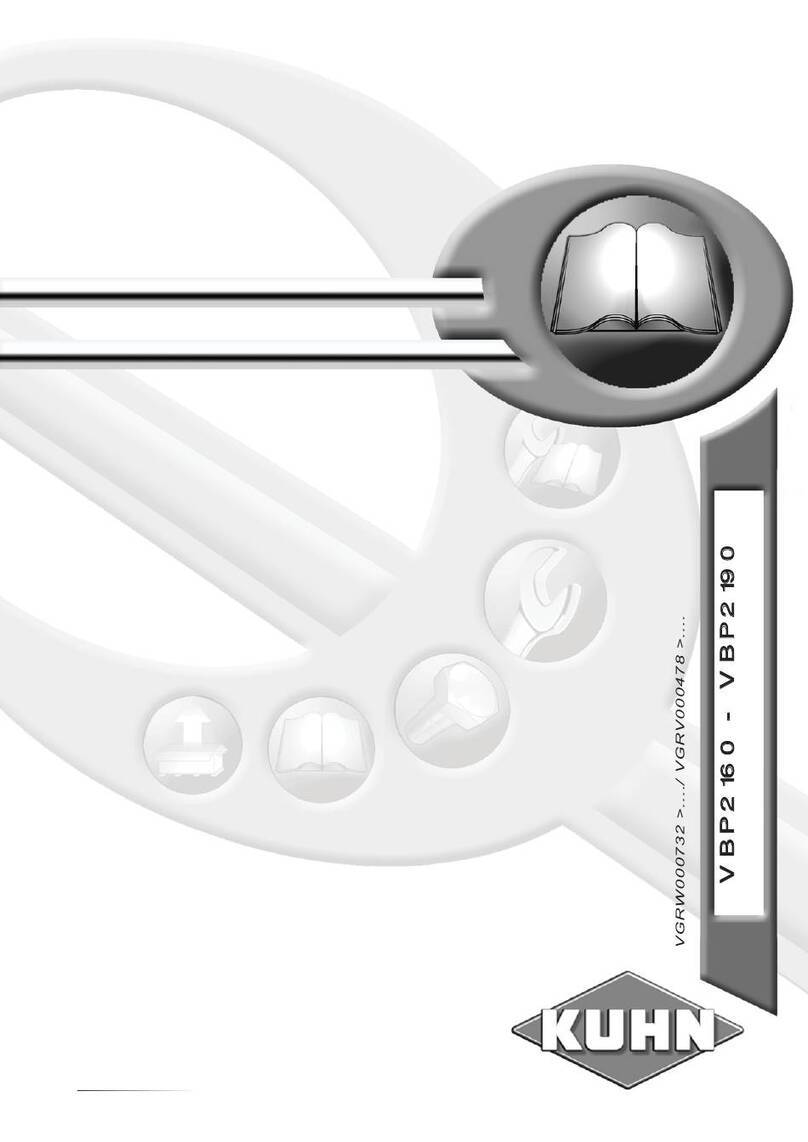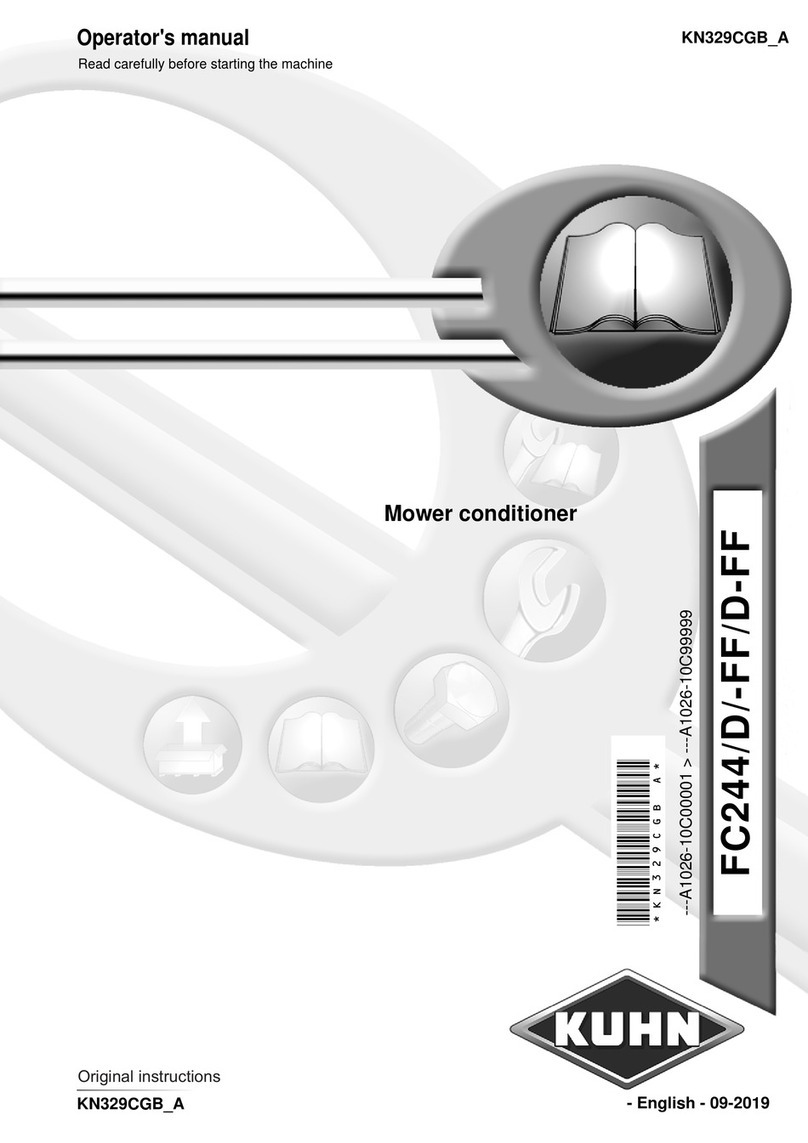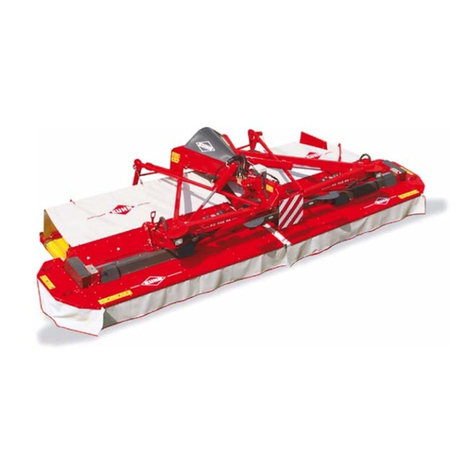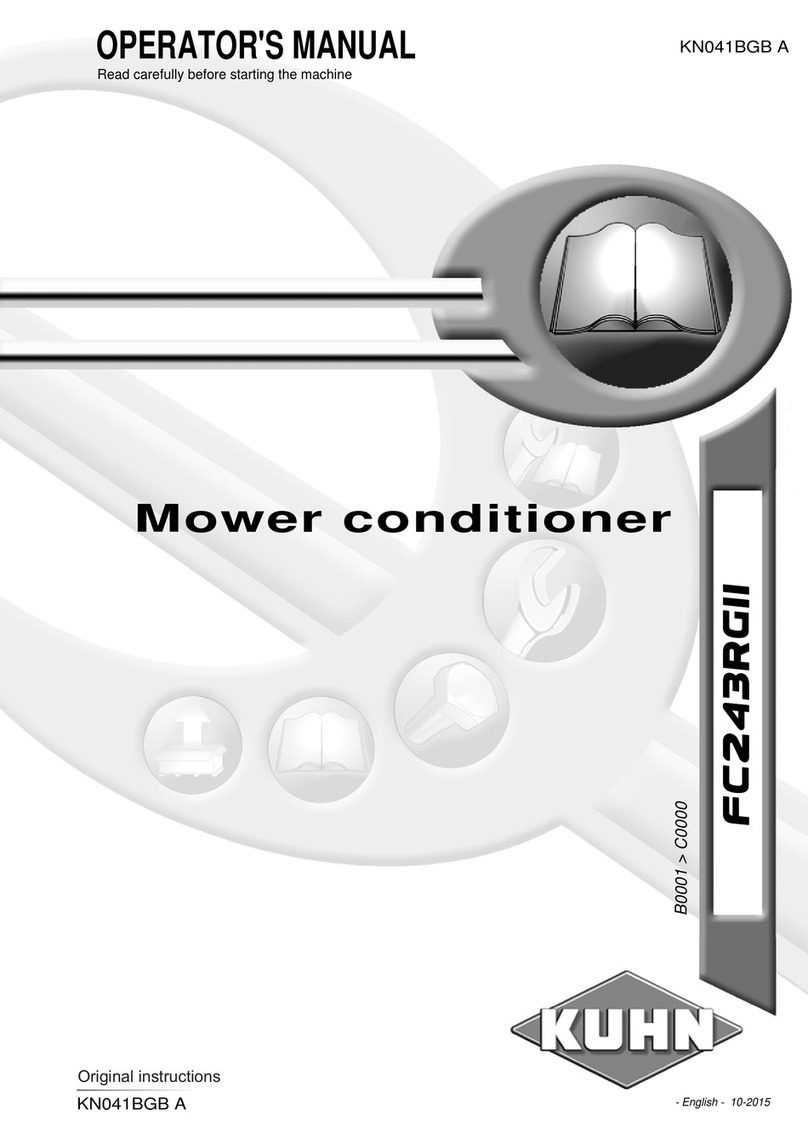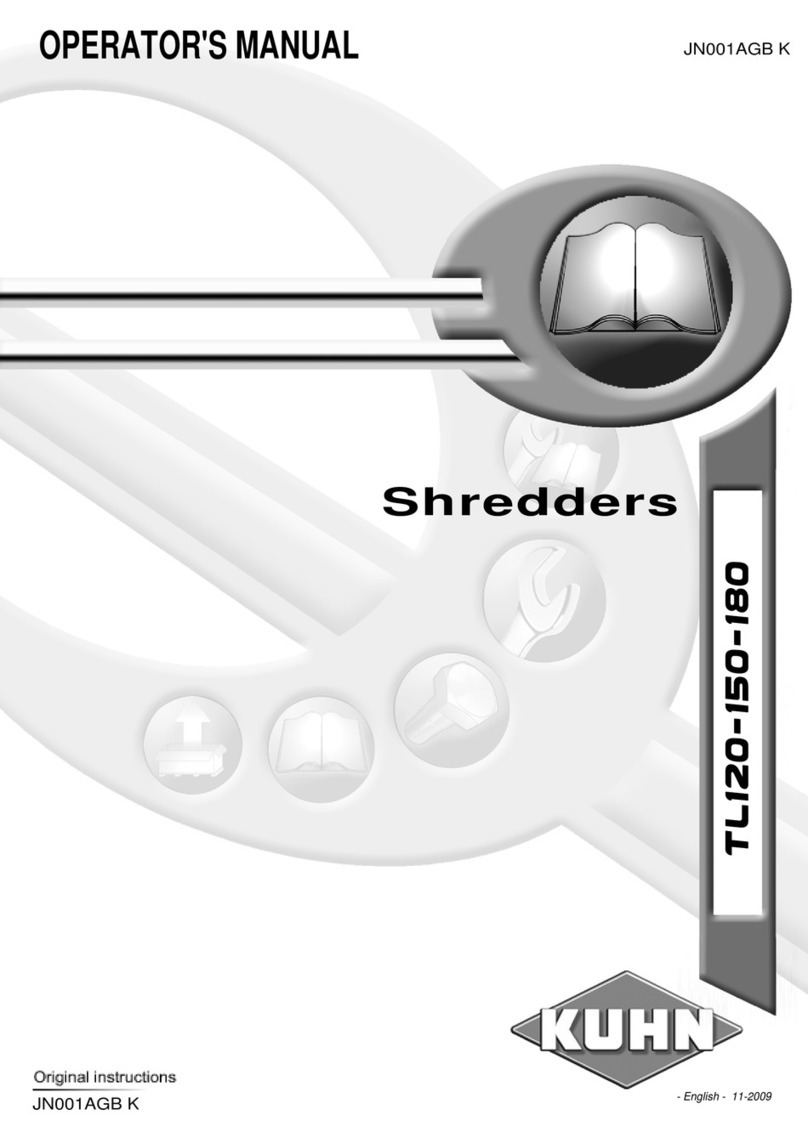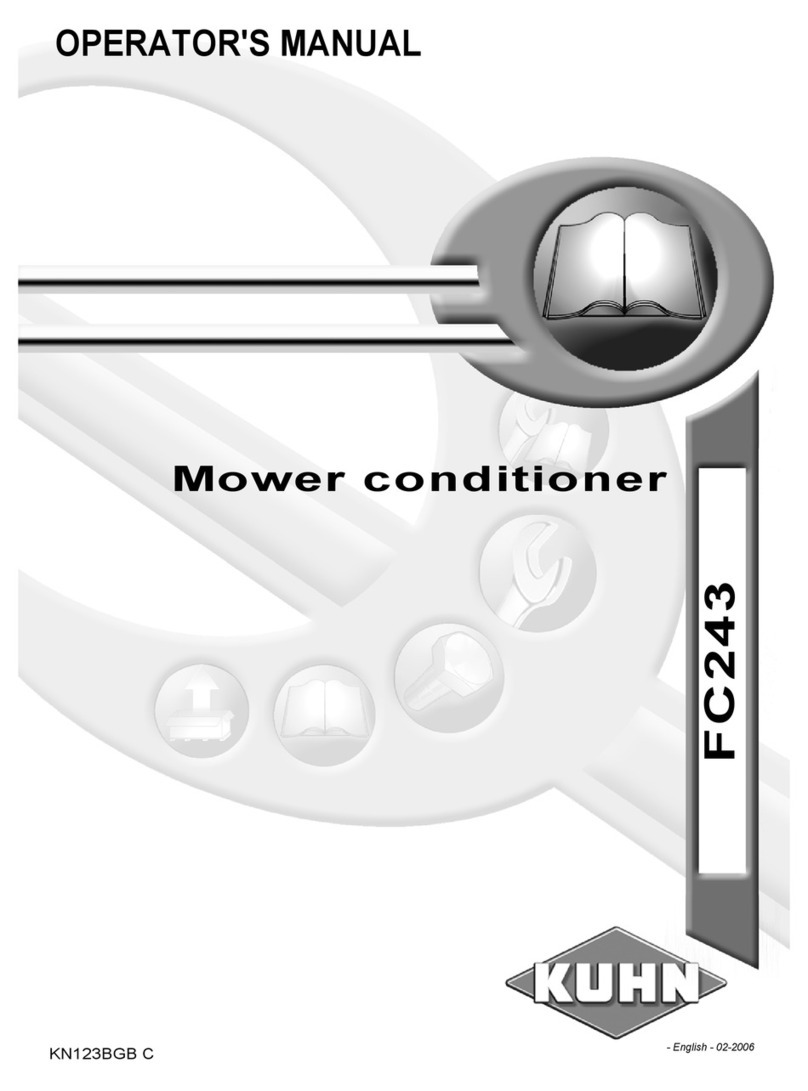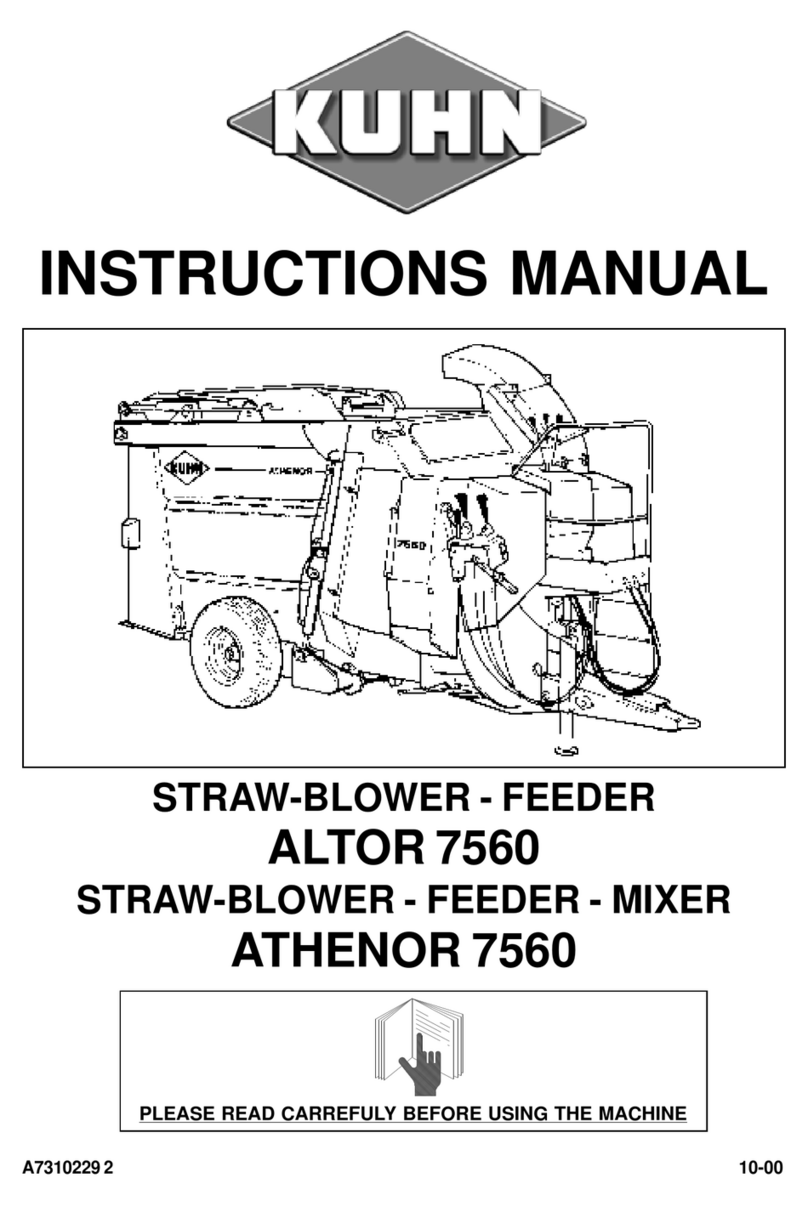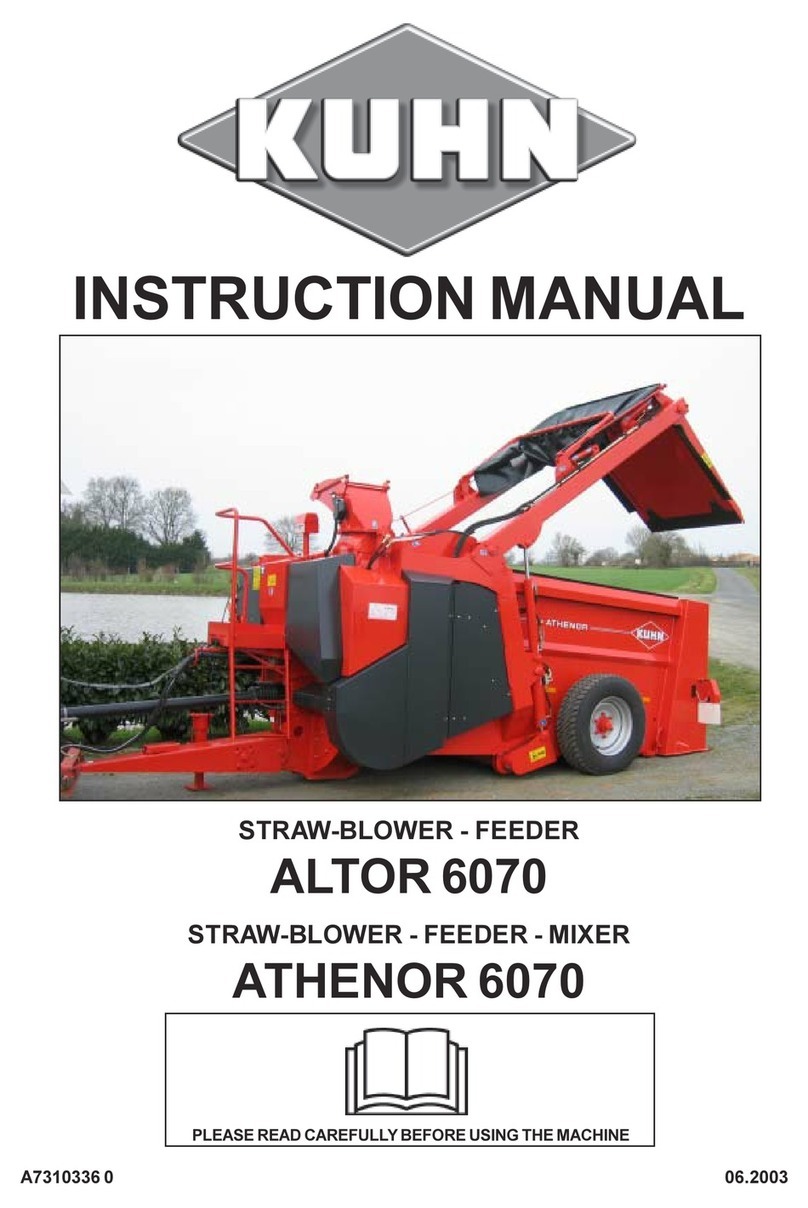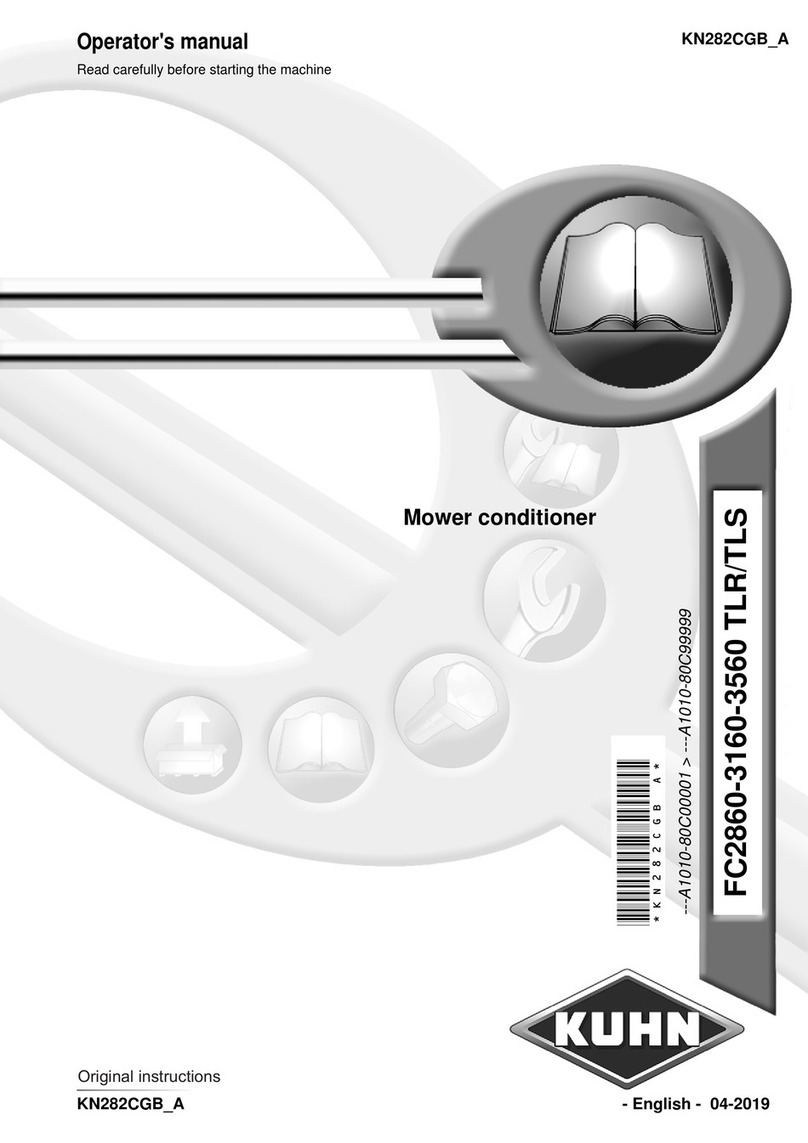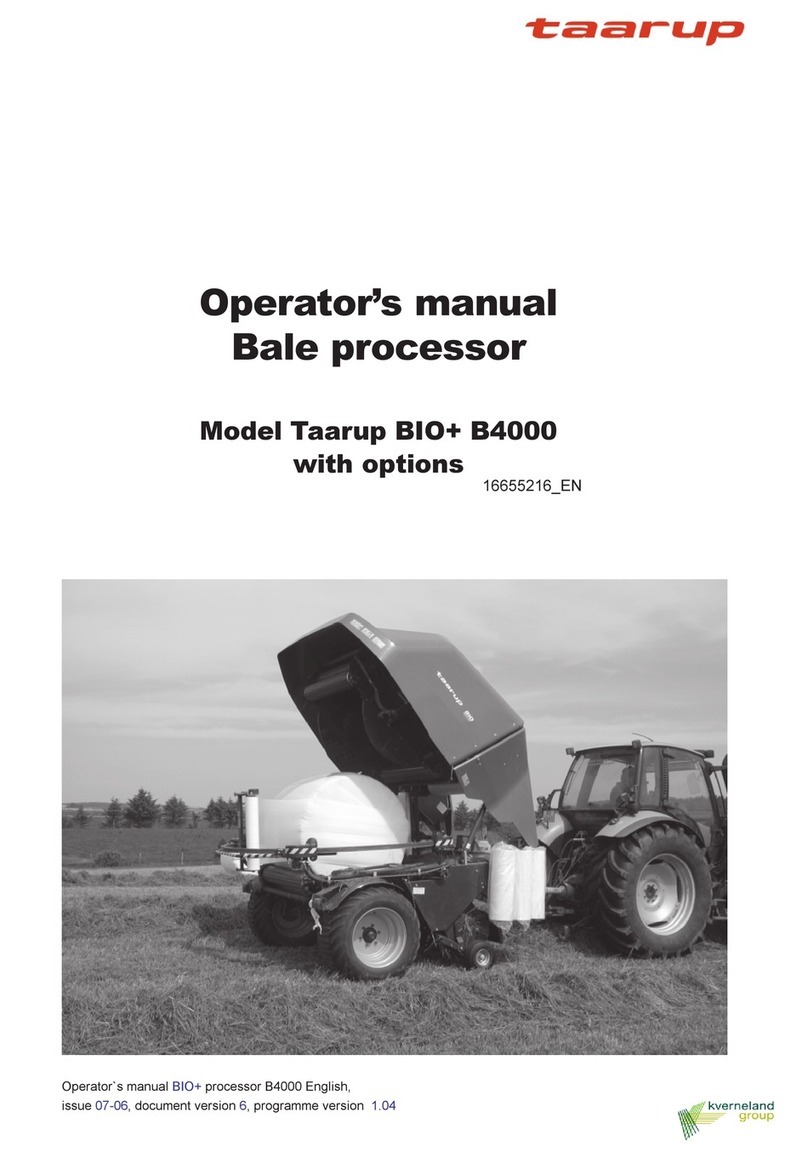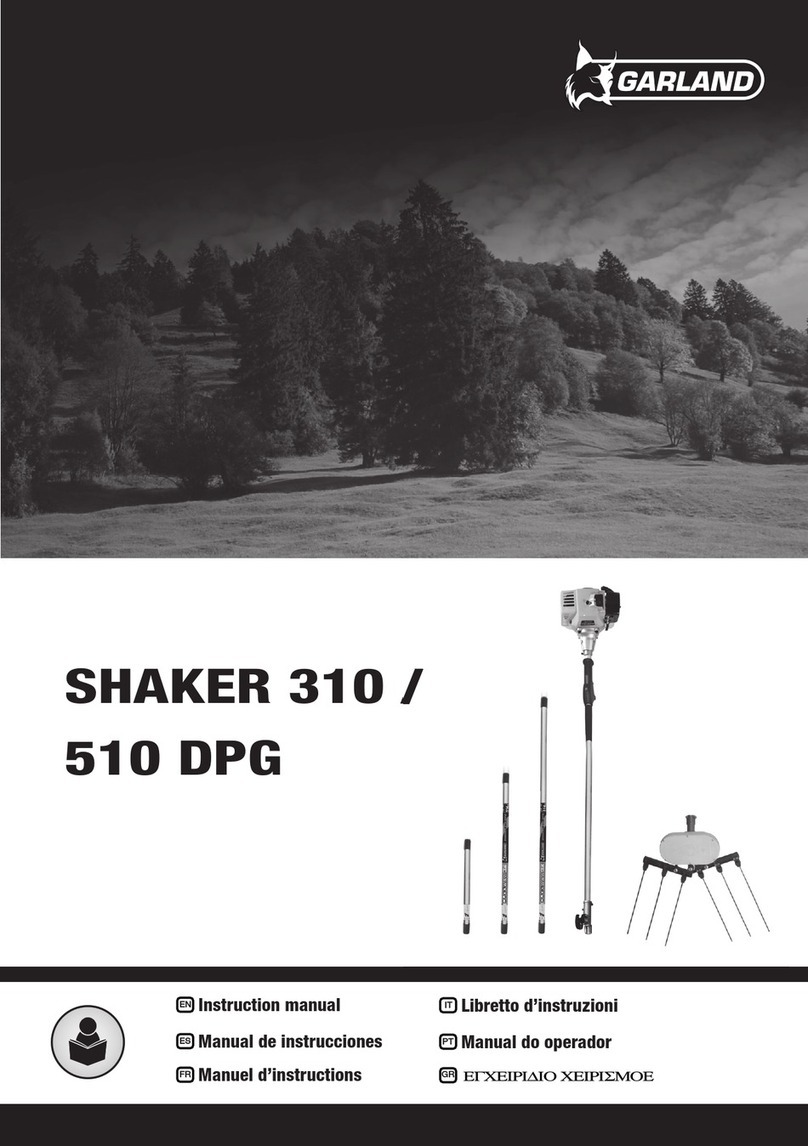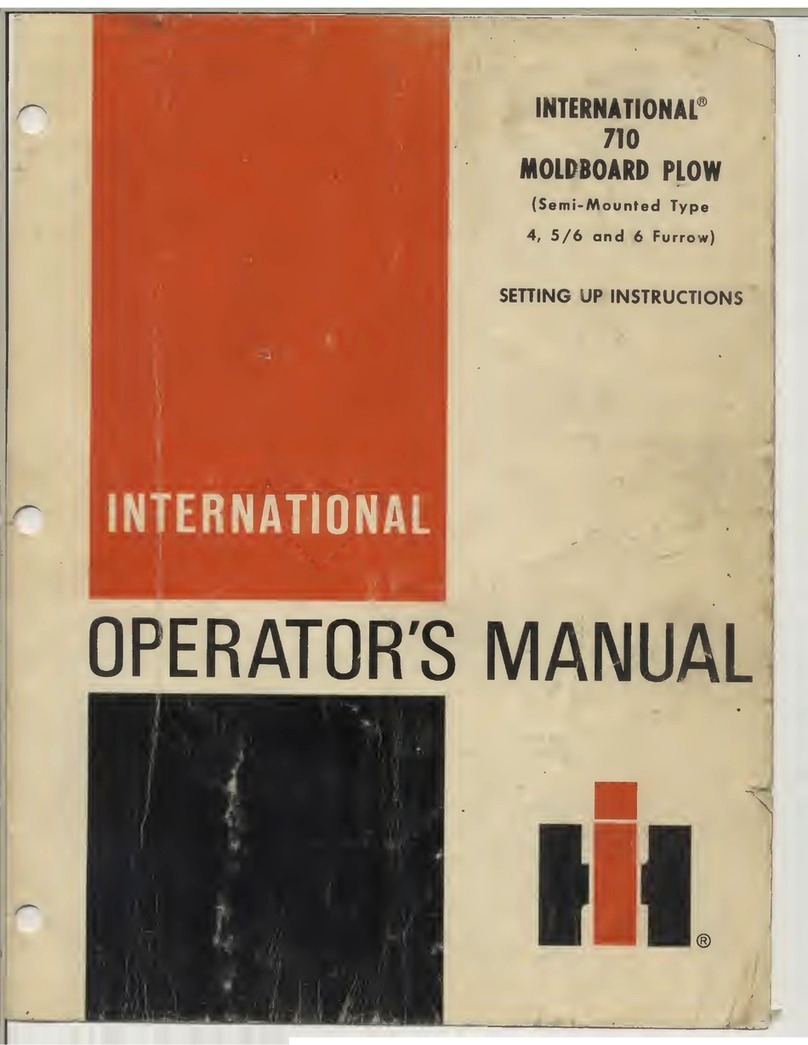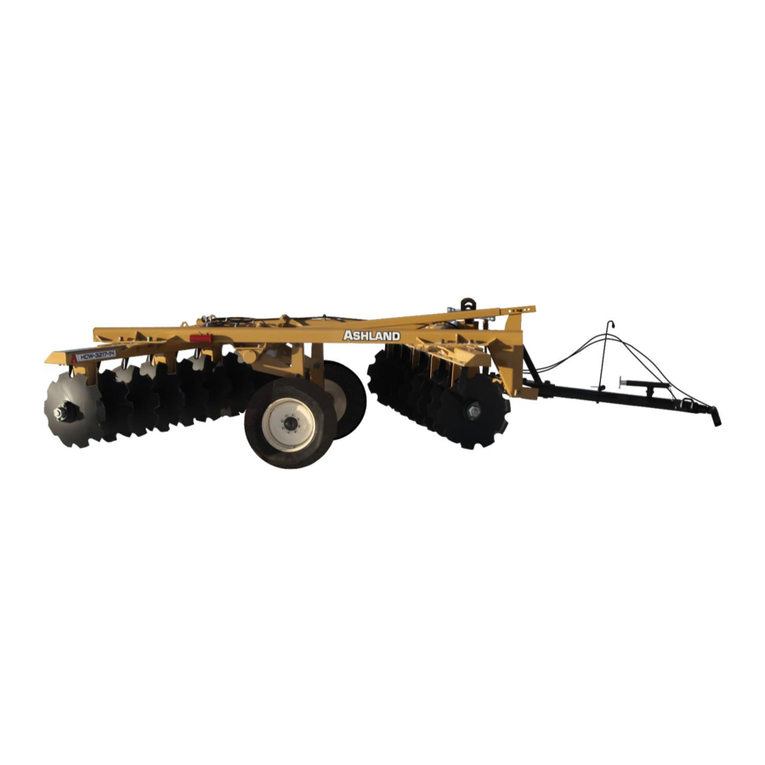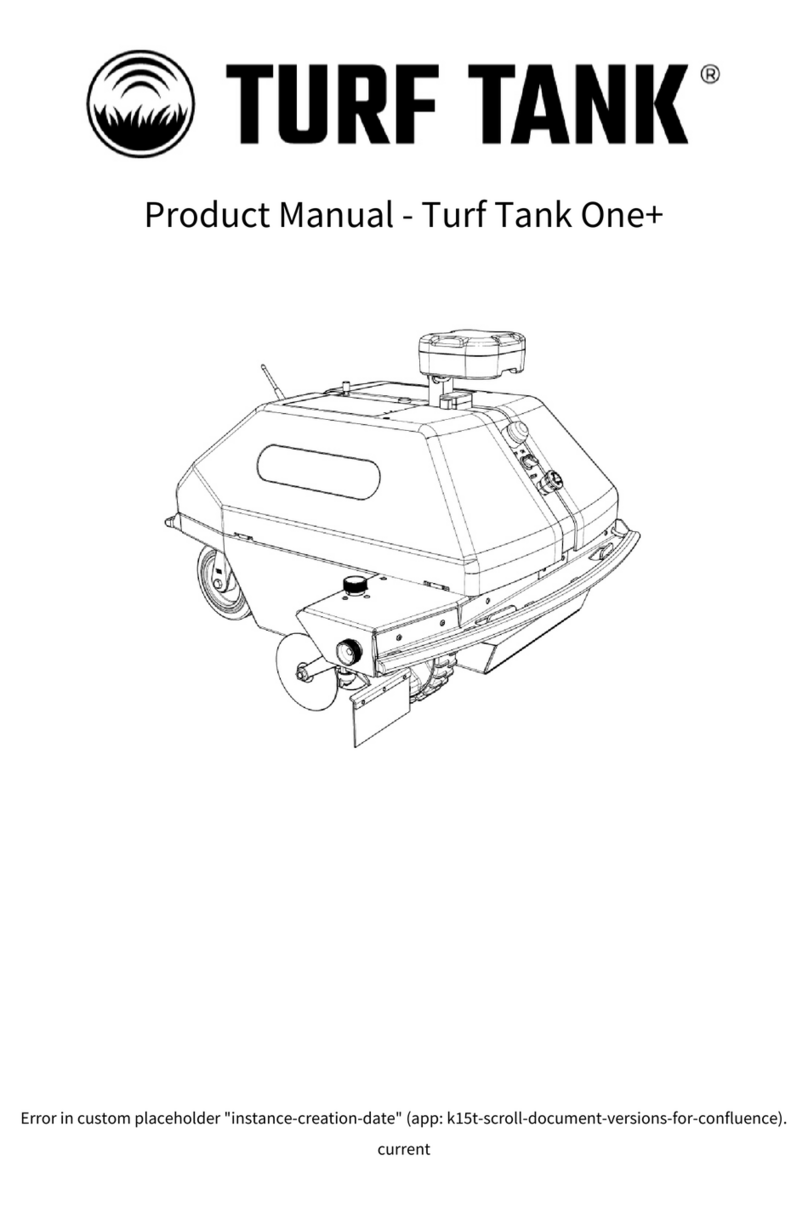
6
19. Steering precision, tractor adhesion, road holding and braking efficiency are affected by
factors such as: terrain conditions, the weight and the nature of the machine hitched to
the tractor, ballast on the front axle, terrain or road conditions. It is therefore imperative
that precautionary rules as they relate to each situation be observed.
20. Take extra care on bends, allowing for overhangs, the length, height and weight of the
machine or the trailer hitched to it.
21. Before using the machine at all, ensure that all protective devices are in place and in
working order. Guards which are damaged (even slightly) are to be replaced
immediately.
22. Each time the machine is used, check screws and nuts beforehand for tightness,
especially those securing tools (teeth, tines, blades, knives, etc.). Retighten as
necessary.
23. Keep clear of the area in which the machine is operating.
24. :$51,1* Crushing or shearing zones may exist on remotely controlled units,
especially those operated hydraulically and pneumatically.
25. Before dismounting from the tractor or prior to any work on the machine, stop the
engine, remove the ignition key and wait until all moving parts have come to a standstill.
26. Do not stand between the tractor and the machine without having applied the parking
brake or placed suitable chocks under the wheels beforehand.
27. Ensure the machine cannot be started up accidentally before carrying out any work on it.
+,7&+,1*
1. Place the hydraulic lift control in a position which prevents any accidental operation of
the lift mechanism when hitching or unhitching the machine to or from the tractor.
2. When attaching the machine to the 3-point hitch on the tractor, ensure that the diameters
of the pins or stubshafts match those of the ball joints correctly.
3. Warning! There are crushing and shearing hazards in the area around the 3-point hitch!
4. Do not stand between the tractor and the machine when operating the external lift
control.
5. The machine needs to be stabilised by means of the hitch stiffening ties during transport
in order to prevent any float or sideways movement.
6. Lock the lift control lever when transporting the machine in the raised position.
+<'5$8/,&6<67(0
1. Warning! The hydraulic system is pressurised.
2. When fitting hydraulic cylinders or motors, take care to ensure that the system is
connected correctly in accordance with the manufacturer’s guidelines.
3. Before connecting a hose to the hydraulic system, ensure that the tractor system is not
pressurised.
4. Machine users are strongly advised to place identification marks on the hydraulic hoses
between the tractor and the machine in order to avoid improper connection.
